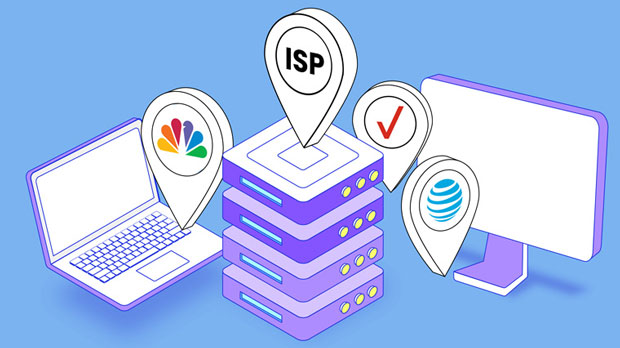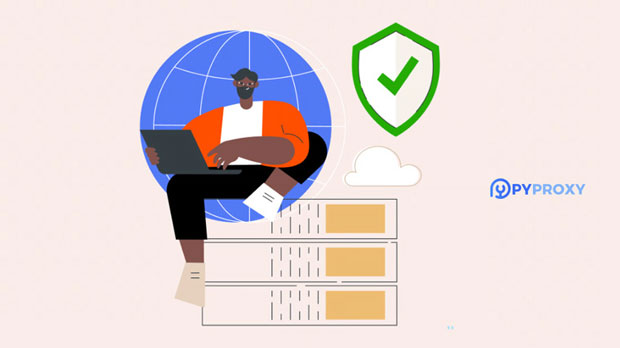When it comes to wireless networks, there are many factors that can influence network performance, such as bandwidth, signal strength, and interference. One of the less discussed but significant aspects is the use of a proxy address in a wireless network setup. A proxy acts as an intermediary server between a client and the destination server, often used to enhance security, privacy, or bypass certain restrictions. However, there is a growing concern that the use of a proxy address in wireless networks could contribute to higher packet loss rates, which in turn could degrade the overall network experience. In this article, we will delve deep into the concept of proxies, how they work in wireless networks, and examine whether they indeed lead to higher packet loss. Understanding Proxy Servers in Wireless NetworksBefore diving into whether a proxy address causes higher packet loss in wireless networks, it’s essential to understand how proxy servers function within such networks. A proxy server essentially relays requests from a client to a destination server. When a client sends a request, the proxy intercepts it, forwards it to the appropriate server, and then returns the response to the client. There are several types of proxies, including forward proxies, reverse proxies, and transparent proxies. Each type has its specific use case, such as improving privacy, load balancing, or accessing content restricted by geographical location. However, regardless of the type, proxies introduce an additional layer of communication between the client and the server. This intermediary nature of proxy servers can contribute to latency, which may in turn influence packet loss.The Role of Wireless Networks in Packet LossWireless networks, as opposed to wired networks, are inherently more susceptible to packet loss. Factors like signal strength, interference, network congestion, and distance from the router or access point can all contribute to this issue. In a wireless network, data packets are transmitted over the air, and any disruption in the signal can cause packets to be lost. While packet loss is a common occurrence in wireless networks, it becomes more significant when it leads to delays, interruptions in service, or degraded user experiences. The consequences of packet loss in wireless networks can range from slower browsing speeds to poor-quality video calls or even complete disconnections in some cases. Proxy Servers and Network Performance: How They InteractNow that we understand the basics of both proxies and wireless network performance, let’s explore the interaction between them. When a proxy server is involved in a wireless network setup, it can potentially contribute to increased latency. This is due to the additional step involved in forwarding packets through the proxy server. In theory, this additional step can cause delays, which might contribute to packet loss if the network is already under strain.Additionally, proxy servers, especially those that handle multiple requests simultaneously or are poorly configured, can become overloaded. This can lead to dropped connections or timeouts, further exacerbating the problem of packet loss. Moreover, if a proxy is located far away from the client or the destination server, the data packets must travel a greater distance, which can increase the likelihood of packet loss, particularly in wireless networks that are already prone to signal degradation.Impact of Proxy Configuration on Packet LossThe configuration of the proxy server plays a critical role in determining whether it leads to higher packet loss. For example, proxies that use inefficient routing algorithms, lack sufficient bandwidth, or are not optimized for wireless network conditions can have a noticeable impact on packet loss. Additionally, proxies that are not designed to handle high traffic volumes or are placed in geographically distant locations may introduce greater delays, which can result in higher packet loss.Furthermore, proxy caching mechanisms can either alleviate or worsen the situation. Caching stores frequently requested data on the proxy server, reducing the need for repeated requests to the destination server. While this can improve network performance in some cases, improper caching configurations can lead to outdated or incomplete data being transmitted, which may further contribute to packet loss.Can Proxy Servers in Wireless Networks Lead to Higher Packet Loss?The short answer is that while proxy servers can contribute to packet loss in wireless networks, the extent of this impact depends on various factors. These include the configuration of the proxy, the quality of the wireless network, the type of proxy being used, and the distance between the client and the server. In some cases, a well-configured proxy server may not cause noticeable packet loss, particularly in a low-traffic, low-latency environment. However, in scenarios where the wireless network is already experiencing congestion, interference, or poor signal quality, the added overhead of routing packets through a proxy server can increase the likelihood of packet loss. This is especially true in high-traffic situations or when proxies are improperly optimized for wireless network conditions.Strategies to Minimize Packet Loss in Wireless Networks Using Proxy ServersWhile proxy servers can increase packet loss under certain conditions, there are strategies that can help minimize this effect. Here are some practical approaches to consider:1. Optimize Proxy Server Configuration: Ensure that the proxy server is configured to handle the specific needs of the wireless network. This may include adjusting caching settings, optimizing routing algorithms, and ensuring the proxy can handle high traffic loads without becoming overloaded.2. Upgrade Network Infrastructure: Improving the overall quality of the wireless network can help reduce the likelihood of packet loss. This includes upgrading the wireless router or access point, using higher-quality antennas, and minimizing interference from other devices.3. Reduce Distance Between Client and Proxy Server: Proxies located farther away from the client or the destination server can increase latency and contribute to packet loss. Reducing the physical distance between the client and proxy server, or using a geographically closer proxy, can help mitigate this issue.4. Monitor Network Traffic: Regular monitoring of network traffic can help identify areas of congestion or bottlenecks that may contribute to packet loss. By identifying these problem areas, adjustments can be made to optimize the flow of data.5. Use a Reliable Proxy Service: Choosing a reputable and well-optimized proxy service can ensure that the proxy server is less likely to become a bottleneck in the network. High-quality proxy services often invest in improving server speed, reducing latency, and handling high volumes of traffic.In conclusion, while the use of proxy servers in wireless networks can potentially lead to higher packet loss, the extent of this impact largely depends on various factors such as proxy configuration, network quality, and the type of proxy used. By optimizing proxy configurations, improving wireless network conditions, and monitoring traffic, it is possible to minimize the effects of packet loss and maintain an efficient and stable network environment. Therefore, while proxies can introduce challenges, they are not inherently responsible for higher packet loss unless coupled with other network issues. With the right measures in place, the negative impact of proxies on packet loss can be significantly reduced.
Sep 08, 2025



































































